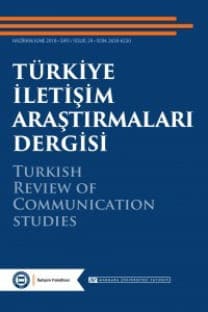Sınır Kapıları, Dikenli Teller, Yollar, Kamplar ve Çocuklar: Kurban ve İstisna Olarak Mülteci
Avrupa ülkelerinin büyük bir göç dalgasıyla karşı karşıya kaldığı 2015 yılı sonrasında Mülteci Krizi olarak anılmaya başlayan olay, daha ziyade modernliğin krizini göstermektedir. Bu yazıda, bu krizi ele alırken tüm dünyada medyada en çok kullanılan imgelerin ürettiği söylem çözümlenmekte; aidiyet, sınır, ulus-devlet, ev ve evsizlik, kimlik, öteki, özgürlük ve kapat(ıl)ma, tarih ve etik meseleleri bu imgeler ekseninde tartışılmakta ve bu imgelerin modernliğin bir krizi olarak bu krize karşı eleştirel bir pozisyon almaya imkân verip vermediği tartışılmaktadır. Sonuç olarak, bu imgeler aracılığıyla bu krizin modernlikten kaynaklanan bir sorun olarak değil, modernliğin istisnası olarak inşa edildiği, bu suretle krizin modernlik lehine çözüldüğü ve sömürgeci söylemin yeniden üretildiği iddia edilmektedir.
Anahtar Kelimeler:
Mülteci, Modernite, İstisna, Öteki, Sömürgecilik
Border Gates, Barbed Wires, Roads, Camps and Children: Refugee as a Victim and an Exception
The event referred as The Refugee Crisis after 2015, the year that the European countries confronted with a huge migration wave, is rather a crisis of modernity. In this paper, the discourse created by the images most frequently used in media all over the world when depicting this crisis is examined; issues such as belonging, border, nation-state, home and homelessness, self and the other, freedom and confinement, history and ethics are discussed; and whether these images create the grounds for the viewers to attain a critical position towards this crisis as a crisis of modernity is discussed. It is concluded that these images help solve this crisis on behalf of modernity by representing this event as an exception of modernity rather than a consequence of it, reproducing the colonialist discourse.
Keywords:
Refugee, Modernity, Exception, The Other, Colonialism,
___
- Başlangıç: 1992
- Yayıncı: Marmara Üniversitesi
